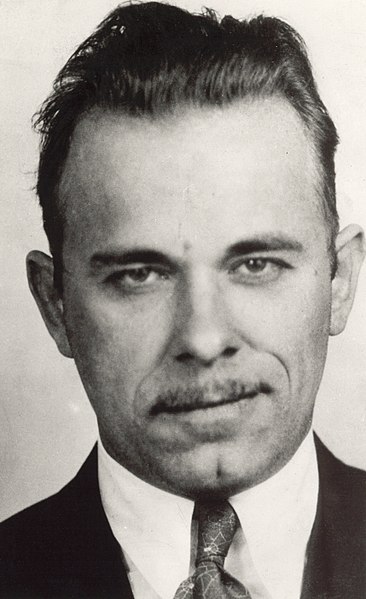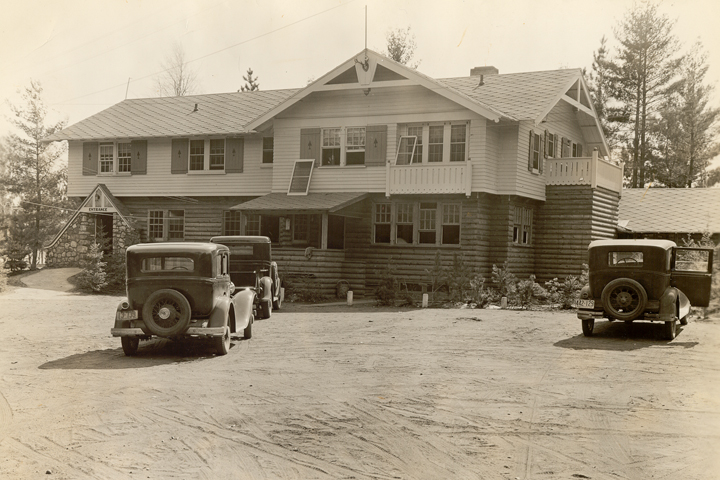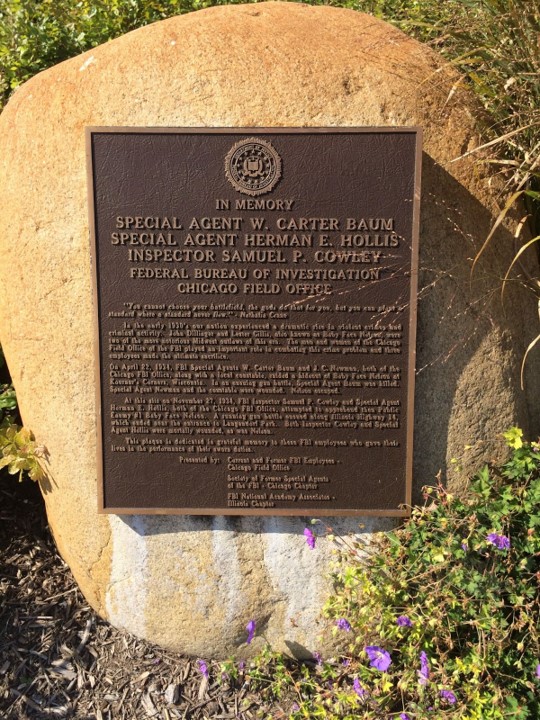In the 1930’s, John Dillinger’s gang was on a crime spree throughout the Midwest and the FBI’s famous “G-men” were on the case.
The Chicago gang frequently spent time in the bucolic town of Lake Geneva, Wisconsin, 80 miles from Chicago, and agents were keeping an eye out for their most wanted. In November, 1934, they had one in their sights and the Battle of Barrington ensued.
Getting There
Location: Langendorf Park, Barrington, IL
Transport: Most convenient by car, but you could walk/Uber from the Barrington Metra commuter rail station (~1.5 miles).
John Dillinger's Gang
John Dillinger was a notorious Chicago gangster who styled himself as a Robin Hood as his gang robbed banks throughout the Midwest in 1933-34. The gang would also raid state police arsenals to stock up on weapons and ammunition.
The gang used military-style tactics in their raids, assigning roles like a designated look-out, a get-away driver and those focused on skills such as vault and safe cracking.
More than a dozen men would be associated with Dillinger’s gang, though none save the lead man himself have the notoriety of “Baby Face” Nelson.


Lester Gillis was born in Chicago in 1909 and spent much of his youth in local street gangs. He also went by the name George Nelson and his perpetually youthful appearance led to his nickname “Baby Face”. He met and married his wife, Helen, in 1928.
While serving time for a bank robbery, he escaped in 1932 while being transferred to stand trial for another bank robbery. He made his way to California, where he met fellow bootlegger John Chase. The two men struck up a friendship, often introducing one another as half brothers.

Nelson’s wife joined the men in California but the trio eventually returned to Chicago, where they joined the Dillinger gang.
Even gangsters need a vacation, and Wisconsin’s serene towns often served as an escape from the busy streets of Chicago in the 20’s and 30’s, even as it still does today. The Little Bohemia Lodge in northern Wisconsin was a favorite spot of Dillinger. A botched FBI raid in 1934 failed to capture Dillinger, Nelson and others.
During the raid, Nelson escaped to a nearby home, leaving Helen behind. He was discovered and managed to kill two FBI agents and a local policeman to evade capture. A bounty was put out for information regarding Nelson’s whereabouts.
Nelson and Dillinger robbed a bank in Indiana where a police officer was killed. They were later discovered in Chicago but again Nelson shot his way out and was not captured. Dillinger was later killed outside the Biograph theater in Chicago.
The Battle of Barrington
On November 27, 1934, Chicago FBI Agent Samuel P. Cowley was alerted to Nelson having been spotted with a stolen car headed towards Wisconsin. Two special Agents spotted Nelson with his wife and John Chase in Illinois on a main road used to travel between Chicago and Wisconsin, and began to pursue the outlaws.

Chase fired at the Agents during the pursuit, who returned fire and damaged the radiator of Nelson’s car. By this time, Cowley and another agent, Herman Hollis had met up with the chase in Barrington, Illinois.
Nelson veered his damaged car off Northwest Highway at the entrance to North Side Park in Barrington and began firing on the agents, who also stopped. Helen ran to a nearby field to take cover during the gunfight.
Hollis was killed at the scene and Cowley was mortally wounded. Nelson was also wounded, but managed to steal Cowley’s car since his own was too damaged to continue. With Chase behind the wheel, the trio fled the scene but Nelson was not to recover. He died in the vehicle and his body was discovered the next day following an anonymous tip.
Helen Gillis was captured the following day and sent to a Federal Women’s Reformatory. Chase managed to evade capture for another month but was eventually captured as well. He was the first person tried under a new law that made the murder of an FBI agent killed while performing their duty a federal offence and was sent to Alcatraz.
Barrington, Illinois
Barrington was incorporated in 1865 and by the early 1900’s became a regular area for relaxation for the wealthy businessmen of Chicago, 40 miles to the southeast.
The site of the Battle of Barrington is today known as Langendorf Park and a modest plaque commemorates the law enforcement officials who lost their lives that day.
There is ample parking available at the site, with multiple shops and restaurants to visit nearby.

Post Sources:
[bg_collapse view=”link” color=”#4a4949″ icon=”arrow” expand_text=”Show More” collapse_text=”Show Less” ]
Lester Gillis (“Baby Face” Nelson), FBI website.
“Surviving Witness, son of former FBI agent recount infamous “Battle of Barrington” shootout” Chicago Tribune, 19 May 2017.
Village of Barrington website.
[/bg_collapse]
